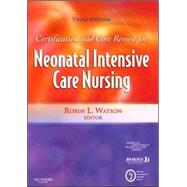
| General Assessment and Management | |
| Assessment of Fetal Well Being (10) | |
| Significance of findings | |
| Alpha-fetoprotein | |
| Biophysical profile | |
| Diagnostic ultrasound | |
| Lung maturation studies Recognize neonatal significance of fetal heart rate patterns | |
| Altered variability | |
| Decelerations | |
| Tachycardia, bradycardia Effects of maternal medications on fetus/neonate | |
| Tocolytics | |
| Analgesia, anesthesia Impact of methods of delivery mode on neonate | |
| Adaptation to Extrauterine Life (11) | |
| Transitional circulation Routine care considerations Recognition of the sick newborn | |
| Neonatal Resuscitation (10) | |
| AHA/AAP guidelines for neonatal resuscitation | |
| Initial evaluation | |
| Indications for ventilation | |
| Indications for intubation | |
| Indications for compressions | |
| Resuscitation of the infant born through meconium stained amniotic fluid | |
| Indication for chest compressions | |
| Use of resuscitation medications: epinephrine, volume expanders, sodium bicarbonate Resuscitation of the neonate with | |
| Diaphragmatic hernia | |
| Hydrops fetalis | |
| Perinatal asphyxia | |
| Upper airway obstruction | |
| Physical Assessment (42) | |
| General appearance Head Eyes, ears, nose and throat Neck Chest Abdomen Genitalia Extremities Spine/back Skin Neuromuscular and reflexes | |
| Gestational Age Assessment (32) | |
| Interpretation of growth curves Physical and neuromuscular characteristics | |
| Preterm | |
| Term | |
| Postterm | |
| SGA | |
| AGA | |
| LGA Associated risks with | |
| Preterm | |
| Postterm | |
| SGA | |
| LGA | |
| Thermoregulation (21) | |
| Mechanisms of heat loss and production Maintaining a neurtralthermal environment Management of thermoregulation problems Equipment | |
| Incubators: servo controlled vs non-servo controlled | |
| Radiant warmers | |
| Fluid and Electrolytes (21) | |
| Normal fluid and electrolyte requirements Monitoring fluid and electrolyte status | |
| Nutrition Management (21) | |
| Nutritional requirements Enteral feeding | |
| Minimal enteral feeding | |
| Gavage feeding | |
| Bottle feeding | |
| Breast feeding Parenteral nutrition | |
| Indications | |
| Composition | |
| Complications Dietary supplements | |
| Breast milk fortifiers | |
| Glucose polymers | |
| Iron | |
| MCT oil | |
| Vitamins | |
| Developmental Support (21) | |
| Neurobehavioral development Stability and stress signals Impact of the NICU environment Intervention strategies | |
| Reducing noise levels | |
| Reducing light levels/diurnal patterns | |
| Altering care patterns | |
| Handling | |
| Positioning | |
| Kangaroo care | |
| Non-nutritive sucking | |
| Provision of sensory experiences | |
| Radiographic Evaluation (11) | |
| Xray views commonly used in newborns Radiographic densities Indwelling lines and tubes Radiographic features of common newborn diseases/defects/conditions | |
| Pharmacology (10) | |
| Priniciples of neonatal pharmacology | |
| Administration methods/issues | |
| Absorption from GI tract, skin, muscle | |
| Serum drug levels (toxic vs therapeutic) | |
| Drug distribution in the body | |
| Drug excretion | |
| Drug incompatibilities Dosage calculations Common drugs Safety issues | |
| Pathophysiology | |
| Pulmonary Disorders (99) | |
| System wide knowledge (assessment and monitoring) | |
| Table of Contents provided by Publisher. All Rights Reserved. |
The New copy of this book will include any supplemental materials advertised. Please check the title of the book to determine if it should include any access cards, study guides, lab manuals, CDs, etc.
The Used, Rental and eBook copies of this book are not guaranteed to include any supplemental materials. Typically, only the book itself is included. This is true even if the title states it includes any access cards, study guides, lab manuals, CDs, etc.